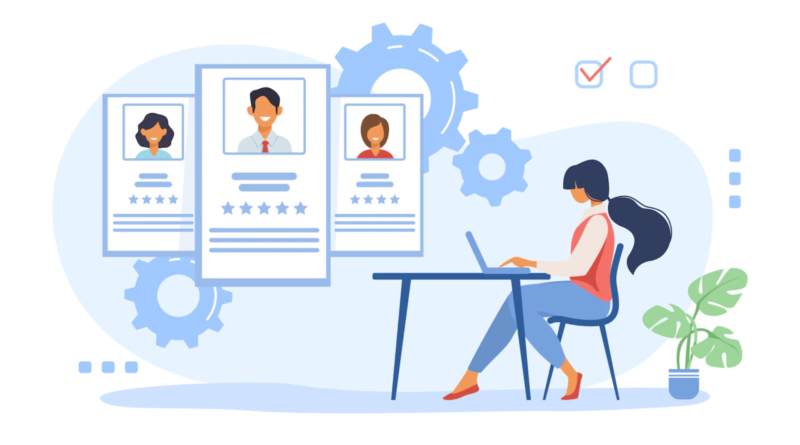Onboarding Checklist for Employees: What to Expect and How to Prepare
The term onboarding refers to the process of transitioning new employees into the company and putting them up to speed with both the people they’ll be working with and the business in general. This can take some time, so it’s important to prepare as much as possible beforehand, particularly if your company has more than one employee onboarding at a time. To help out any business owner who’s currently working on their employee onboarding process, we put together this checklist of all the steps that go into onboarding from start to finish. Take a look!
Why you need an onboarding checklist
- It can be overwhelming to start a new job.
- There are so many things to learn and remember.
- An onboarding checklist can help new employees feel more comfortable and boost employee morale.
- It can also help long-term employees by providing a refresher on company policies and procedures.
- The essentials for an onboarding checklist include items such as an overview of the company, the hiring process, employee benefits, and company culture.
- Onboarding employees is a crucial part of the hiring process and should not be overlooked.
- An onboarding checklist is one tool that can help make sure your employees are off to a great start at their new job!
The ultimate onboarding checklist
The onboarding process is crucial for setting new hires up for success and influencing employee retention. Here are some essentials for an onboarding checklist:
1) A clear and concise job description that outlines expectations
A job description is one of the most important onboarding checklist essentials. It should be clear and concise, outlining expectations for the role. If you’re unsure about what should be included, ask your manager or HR department for help.
2) A timeline of when different tasks need to be completed
You’ve landed the job. Congratulations! The next step is to complete the onboarding process. This can be a daunting task, but we’re here to help. Here’s a timeline of what to expect and when different tasks need to be completed. Make sure you have all the necessary information about your benefits package including 401k matching plans and any other details that are important to you. Send your HR representative a list of contacts for coworkers you know so they can reach out to them before your first day at work, or on Day 1 if it’s possible. Be prepared with specific questions that will make your first days easier (i.e., what equipment do I need?) as well as interview questions so you’ll know how to respond during those interviews in the future. And don’t forget – don’t bring any personal items with you on Day 1 (e.g., an umbrella) so everything will be on-site waiting for you!
3) A tour of the office or worksite
On your first day, you’ll likely be given a tour of the office or worksite. This is a great opportunity to get a feel for the company culture and see how things operate. You may also meet some of your new colleagues during this time. Be sure to ask questions and take note of anything that will be helpful to know later on.
An introduction to the team (three sentences): After the tour, you’ll probably be introduced to your team. This is a good time to get to know your new colleagues and learn about their roles in the company.
4) An introduction to the team and key stakeholders
It’s always a good idea to introduce yourself to the team and key stakeholders on your first day. This will help you get a feel for the company culture and start building relationships with the people you’ll be working with. Here are some things you can expect during your onboarding process, and how to prepare for them,
- Schedule a training session: The first thing that should happen when you arrive is that you should schedule a training session so that you know what to do, where everything is, and what to avoid doing.
- Get your ID badge: When arriving at the office, make sure you have all of your personal belongings with you – including an ID badge. You’ll need this to enter the office every day, get into the kitchen or break room, or use any of our other facilities.
- Attend orientation sessions: Orientation sessions are held regularly in different parts of the week throughout your tenure at {company name}. They cover various topics from time management to learning about various resources we offer.
5) An overview of the company’s culture, values, and mission
It’s important to learn about the company’s culture, values, and mission before your first day on the job. This will help you understand the company’s expectations and what they value in their employees. The company’s culture should be reflected in its onboarding process, so pay attention to the way you’re being treated during this time. If you’re being rushed through or treated like a number, that’s not a good sign. Take the time to ask questions and get to know your new colleagues. They can be a valuable resource as you adjust to your new role.
What you need to do before your first day (five sentences): Before your first day, take some time to review the company’s website and any other materials they’ve sent you.
6) Keep track of your progress with this free template
No matter what industry you work in, certain expectations and responsibilities come with being a new employee. Onboarding is the process of integrating a new employee into the company culture, and it’s important to make sure that everyone is on the same page from the start. This onboarding checklist template will help you keep track of everything that needs to be done, from paperwork to training to orienting your new hire with the company culture. Once completed, the new employee should have all the information they need to feel welcomed and confident about their decision to join your team.
7) HR automation software to boost efficiency
When it comes to automating your onboarding process, there are a few key benefits that can help boost efficiency in your HR department. First, automating onboarding can help you keep track of all the paperwork and tasks that need to be completed for each new hire. This can be a huge time-saver, especially if you have a high turnover rate. Second, automating onboarding can help you standardize the process so that each new hire has the same experience. This can help reduce confusion and ensure that everyone is on the same page from day one. Finally, automating your onboarding process can help you save money in the long run by reducing the need for manual labor.
8) A plan for long-term success
Successful onboarding programs help new hires adjust to company culture, develop necessary skills and knowledge, and establish strong working relationships. By providing a structured approach to onboarding, you can help new employees hit the ground running and set them up for long-term success.
9) Showcasing excellence in performance
It’s essential that you set the tone for excellence in performance from the very beginning. The onboarding process is key to orienting new employees so they can be successful in their roles. Here’s what you can do to ensure a smooth transition for your new employee during this process:
- Consider creating an orientation guide with your company’s values, policies, etc.
- Share company history, including mission statement and organizational chart.
- Introduce major clients/customers/stakeholders; share relevant contact information with appropriate people on staff.
- Provide information about benefits (policies, options).
- Discuss dress code, timekeeping policy, vacation policy, benefits of working at your company (esp., culture), etc.
Wrapping Up
The onboarding process can be overwhelming, but it doesn’t have to be. By following this checklist and being prepared with the necessary documents, you can make the transition into your new role smooth and stress-free. Soon enough, you’ll be a pro at your new job. Thanks for reading!




